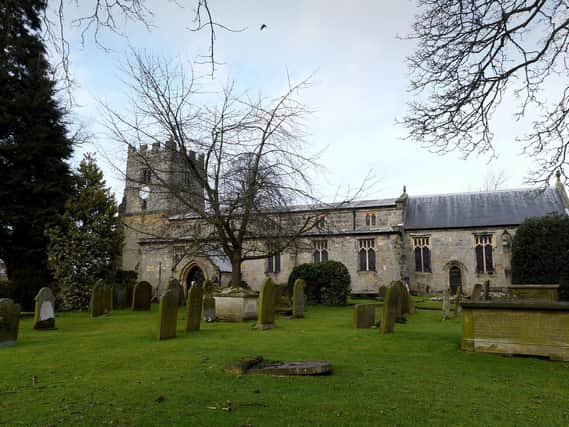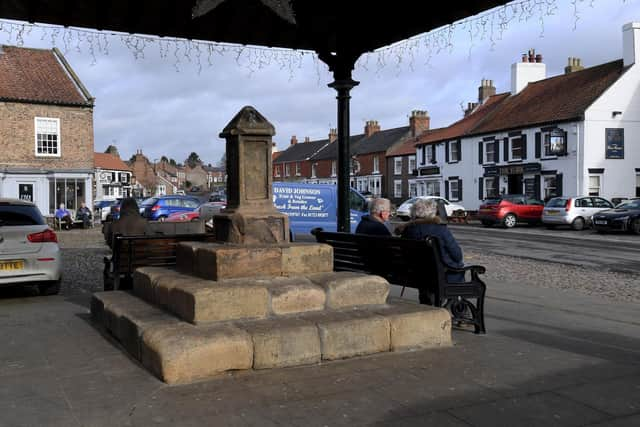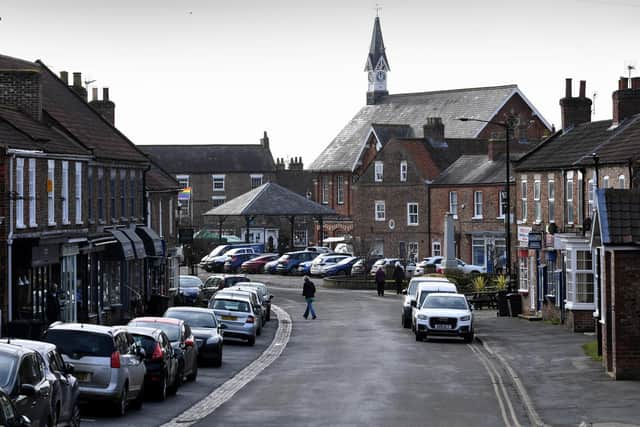Why 'unspoilt' Easingwold could be one of North Yorkshire's best-kept secrets


The attractive market town of Easingwold was once the primary settlement within a 100,000-acre royal forest known as the Forest of Galtres, although you’d never know it today.
By the early 17th century, the indiscriminate felling of the forest for timber, much of which was used to build the rapidly expanding city of York, and to clear land for grazing and cultivation, had sealed the fate of a once vast wilderness.
Advertisement
Hide AdAdvertisement
Hide AdAround 1870, John Marius Wilson’s Imperial Gazetteer of England and Wales made reference to the wholesale destruction of the Forest of Galtres.


In it he wrote: “It was a mixture of forest, moor, and bog; was tenanted by wild beasts, and haunted by robbers; was the scene of many and frequent perils and exploits; but is now all cleared and drained, and has many populous villages.”
The name Easingwold is Anglo Saxon in origin and it’s no coincidence that “wold” is a derivation of “wald”, meaning forest. Although the settlement was recorded in the Domesday Book as Eisecewalt, the spelling varied dramatically over the centuries – at different points in history it has been known as everything from Hesingwald to Esyngwold.
Following the clearance of the Forest of Galtres and the Enclosure Act, which ended traditional rights on common land and restricted the use of land to the owner, Easingwold became known for dairy farming and pig rearing.
Advertisement
Hide AdAdvertisement
Hide AdThis thriving trade led to the development of the town’s cobbled Market Place. In 1639 George Hall secured the right to hold a free market there every Friday, a tradition that still continues today.


In return, he agreed to maintain the pavement and provide a toll booth, although locals were not expected to pay the toll. Prior to that, the area had been little more than an open space at the centre of the village, where grisly medieval pursuits like bull baiting took place and punishments were meted out on the local ducking stool.
Many of the buildings that remain today date back to the Georgian period and the appearance of the Victorian town hall, which was constructed in 1864, was in such stark contrast to its surroundings that the architectural historian Sir Nikolaus Pevsner is said to have described it as a “brute”.
Easingwold’s Grade II-listed St John the Baptist and All Saints Church dates back to the 15th century, although parts of it are thought to be remnants of an earlier structure. It occupies the highest point in the town on Church Hill, from which you can see as far as the White Horse of Kilburn on a clear day.
Advertisement
Hide AdAdvertisement
Hide AdIf you visit, look out for the grave of pub landlady Ann Harrison, who died in 1745 and was known locally as “Nanna Rann Dann”. Her tombstone carries a fascinating inscription and a macabre local legend suggesting that Nanna Rann Dann will emerge if you “run three times round the grave and then spit”, has no doubt captured the imaginations of countless generations of local children. Another interesting artefact is one of the few surviving parish coffins, which was used to carry the bodies of the poor to their grave.
In the late 18th century, the town became a busy stop-off point for stagecoaches travelling north owing to its location on the main road between York and Newcastle. During this period, around 25 inns sprang up around the Market Place and on nearby Long Street to serve travellers passing through the town.
The arrival of the railways in the 19th century killed off this booming trade, but the fact that the nearest station was built three miles away at Alne must have been a further blow for businesses in Easingwold.
Acutely aware of the need for the town to be connected to the railway network, local landowners and businessmen championed the development of the Easingwold Railway, a privately owned, 2.5-mile branch line linking the town with Alne. It officially opened on July 25, 1891, with a large launch event. Unlike many light railways, it was profitable for much of its lifespan but ultimately couldn’t compete with the road network. Passenger services ceased in 1948, although freight services continued until the line finally closed for good on December 30, 1957.
Advertisement
Hide AdAdvertisement
Hide AdThe station was later demolished and the site where it stood has since been redeveloped for housing.
Farming is, of course, at the heart of many North Yorkshire communities and it played a pivotal role in keeping the nation fed during the Second World War. So, too, did the Women’s Land Army (WLA). Around 5,000 women enlisted as Land Girls in Yorkshire, including on farmland around Easingwold, during the conflict.
Today, the word “unspoilt” is often used to describe Easingwold, not least because it has retained much of its Georgian charm.
Part of the town centre is a Conservation Area, ensuring that any development has been carried out sympathetically, but there are also plenty of green and leafy spaces. As well as the pretty village green, there’s the Memorial Park children’s play area and Millfields Open Space, which combines woodland and wetland with a skate park and picnic area.
Advertisement
Hide AdAdvertisement
Hide AdThe Galtres Centre plays host to many of the town’s social gatherings, as well as live events and film screenings. Throw a good selection of independent shops and cafes into the mix and it’s easy to see why Easingwold’s population, which remained stagnant for so long after the stagecoaches stopped passing through, has
steadily increased since the turn of the 21st century.
A good starting point for visitors exploring Easingwold for the first time is the Tourist Information centre on Chapel Street, which is closed during the winter months but reopens at Easter.
For just 30 pence each, you can pick up guides for five very different walks in the area, ranging in distance from three to five miles.
There’s a route that takes in the picturesque village of Crayke and one that follows the River Ouse to the village of Beningbrough, where you can visit Beningbrough Hall, a National Trust property housing paintings from the National Portrait Gallery and surrounded by eight acres of formal gardens, including an impressive walled kitchen garden boasting more than 50 varieties of apples and pears.
Advertisement
Hide AdAdvertisement
Hide AdAnother of the walks passes by a curious attraction called the City of Troy. Also known as the Dalby Turf Maze, its history and origins are shrouded in mystery, with some suggesting that it could be among the oldest turf mazes in England and others claiming that it’s a relative newcomer created in the 19th century.
Either way, it’s a fascinating and most unexpected sight to stumble across at the side of the remote country road between the villages of Dalby and Brandsby.
Despite being just a stone’s throw from tourist hotspots like the Howardian Hills and North York Moors National Park, Easingwold is perhaps not so well known as some its near neighbours, but that may well be part of its appeal.